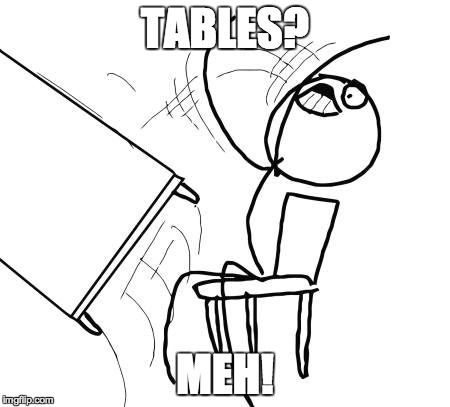You can find the slides (borrowed from earlier work done by the awesome Neo4j team, Ian Robinson most particularly) over here or embedded above, but here's the way we approached this, which I think could be a general way of doing things:
First: a Model
We spent a long time on what are some of the best practices in Graph Database modelling. Here are some of the key takeaways, in my opinion:
You can also find it on github. Pasting this into GraphGen gives you something like this:
Pushing the green "populate" button then fires of a bunch of Cypher queries that will create the database in your running Neo4j server in a matter of seconds:
This whole process works absolutely smooth as ever. It allows you to get a database up and running extremely quickly. It's really great.
The result looks like this - the User in case is at the very right, and the systems he/she uses to the left.
All these queries are on github as well. You may need to change the identifiers for users/systems as they will obviously be different if you generate your own database.
All in all I thought this exercise was a very useful and a pleasant one. Going from zero to graph in a matter of hours is pretty interesting, and offers a lot of potential for iterative experimentation/prototyping.
Hope you found this useful. As always, feedback very very welcome.
Cheers
Rik
- many of the modelling principles are similar to classical use story modelling as I first encountered it two decades ago in OO modelling. Create a story, extract the nouns and verbs to create a basic skeleton of the model.
- think about your use cases and your query patterns long and hard. They will drive the model - you want to model for queryability.
- Don't be afraid of normalisation. In relational modelling normalisation is expensive - in graph modelling it is not as much. You will tend to have "thinner" nodes and relationships in your graph model (holding fewer properties).
- Don't be afraid of redundancy: it is very common to have redundancy in the model - within the same database. Look at the different ways to model email exhanges or marriage relationships - you immediately see there are more than one way of doing things, and none of them is necessarily better than the other. It *depends* on your requirements, your queries.
- Iterate over the model - and understand that as your business requirements change, you may want/need to change the model.

Here's what I ended up working on: a very simple model for a Configuration Management database, that would store Users in Departments of Companies, using a Service that relies on Hardware and/or Software:
I created that "drawing" with the Alistair Jones' "Arrows" tool. I have put the markup file over here.
Second: a prototype dataset
We then had a great time applying that model to generate an actual Neo4j database using Christoph Willemsen's GraphGen. It's amazing how quickly you can get a running Neo4j server populated with some sample data that is worth the while exploring. Here's my GraphGen model: /// CMDB GraphGen Example :
(customer:Company {name: company } *50)
(dept:Department {name: {randomElement:['IT','Sales','Marketing','Operations','Finance'] }} *100)-[:PART_OF *n..1]->(customer)
(u:User {name: fullName} *100)-[:PART_OF *1..1]->(dept)
(customer)-[:USES {percentage: {randomFloat:[2,0,1]}} *n..n]->(serv:Service {name: {randomElement:['Web','ERP','CRM','Mail','Calendar','Files']}} *10)
(serv)-[:USES *1..n]->(soft:Software {name: {randomElement:['OS','Database','Webserver']}} *3)
(serv)-[:USES *1..n]->(hard:Hardware {name: {randomElement:['Storage','Processor','Memory']}} *2)Here
You can also find it on github. Pasting this into GraphGen gives you something like this:
This whole process works absolutely smooth as ever. It allows you to get a database up and running extremely quickly. It's really great.
Third: some traversals!
Last but not least, we then spent some time looking at the generated datasets and exploring some queries. To do that, I first had to add a few indexes for the queries to be efficient. Effectively adding the indexes on the labels' properties that I wanted to look up starting points with for my traversals.
Next, I can do some queries that are quite typical of the "Configuration Management" domain, and we often see in various kinds of "Impact Analysis" use cases. Basically it means traversing the graph from two ends:
- Starting from the Hardware/Software end: asking the question about who would be impacted if a particular piece of hardware/software would fail. An example query would look something like this:
match (h:Hardware {name:"Storage"}),(u:User), p=AllShortestPaths((h)-[*..5]-(u))
where id(h)=865
return p;
The result looks like this (the "Storage" device affected is at the center
- Starting from the User end: asking the question about what hardware/software pieces a particular user accesses. The query looks like this:
match p=Allshortestpaths((u:User {name:"Leland Blanda"})-[*..5]-(h:Hardware))
return p
The result looks like this - the User in case is at the very right, and the systems he/she uses to the left.
All these queries are on github as well. You may need to change the identifiers for users/systems as they will obviously be different if you generate your own database.
All in all I thought this exercise was a very useful and a pleasant one. Going from zero to graph in a matter of hours is pretty interesting, and offers a lot of potential for iterative experimentation/prototyping.
Hope you found this useful. As always, feedback very very welcome.
Cheers
Rik



























